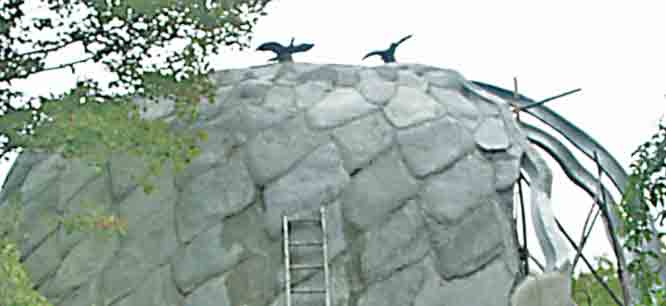
September 3, 2006...(More pictures)
Humble progress after 2006-- 2007 and 2008
Various methods have been used, studied and evolved, to form this structure. In the picture below, (Mid July 06), the courses (or rows) of ferrocement coffers or panels are being cast-formed upon Inner tubes. Damp cloths cover some of the panels being damp-cured.
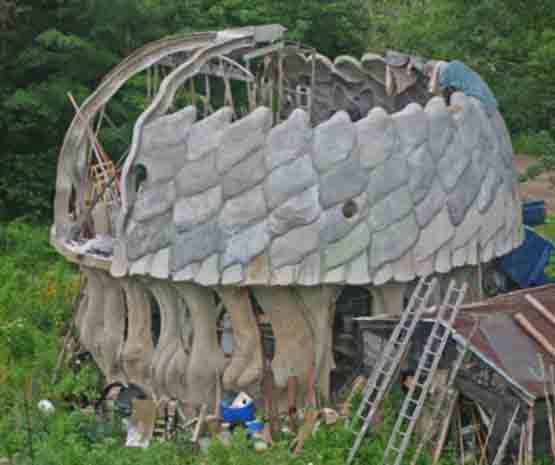
Innertube forms floated overhead, forming cantilevering coffers !
Below appear progress pictures in a low investment project, (summer 2006).
Next picture below: How Inner tubes are elongated and shaped a little. A board with concave shaped ends is forced into the inner tube to stretch and hold an oval-like shape. While inflating, tape is wrapped on one end to hold a slightly pointed shape. A scrap of fiberglass sheet was cut to fit the inner tube hole. Also innertubes may be shaped with rope or bungy cord.
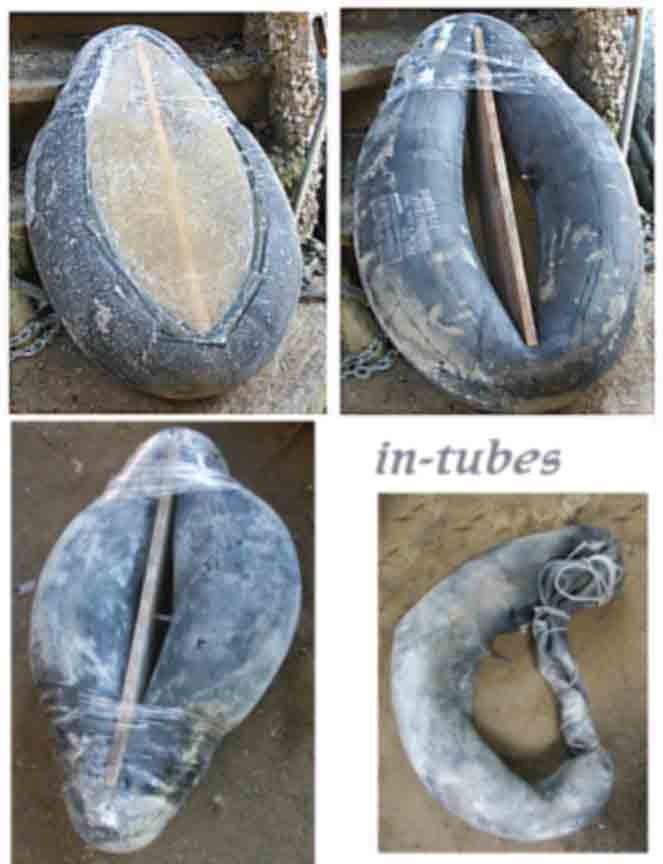
Next picture shows how Inner tubes are held in place with EMT tubing, supported by steel clamps. (EMT tubing is very thin walled, lightweight and galvanized steel pipe). Umbrella is used to shade the work in the hot sun.
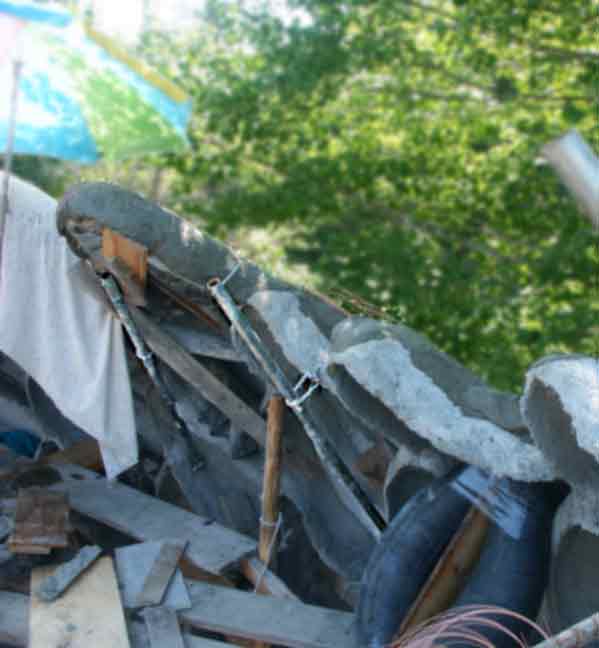
Next picture shows how a chain and "hook" are welded onto a wire nut. The wire nut is tightened on the clamp. Other assorted scraps are used to wedge and prop Inner tubes in place.
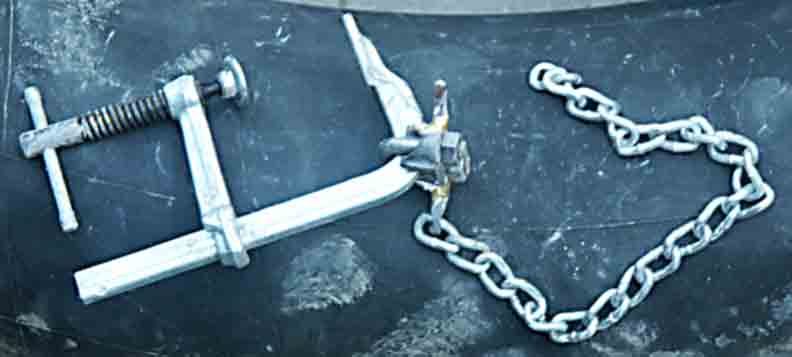 Next (taken from below and looking upwards), shows inner tube removed from molded
concrete-grout. Rag-sheet is drapped over top for wet phase of
cure.
Next (taken from below and looking upwards), shows inner tube removed from molded
concrete-grout. Rag-sheet is drapped over top for wet phase of
cure.
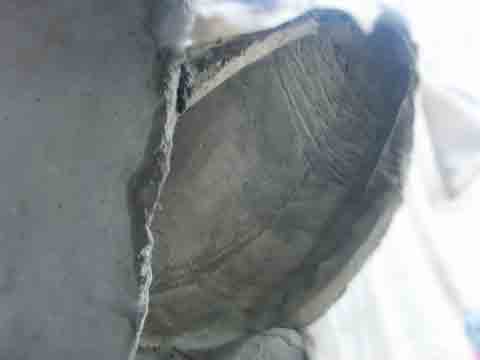
Next picture shows high-tensile steel wire reinforcement during placement. Blobs of mud (grouty-concrete-mortar) temporarily hold the springy wire in flat-spiral rings. This is a gloved-hand sculpting method, no trowels or sprayers are used. When enough "rings" are seen to overlap each other, ( more "rings" than seen in picture), the blobs of mud are consolidated into a 1 inch thickness.(The concrete was quickly chain-hoisted in buckets from ground).

Besides springy flat coils of wire being placed and held by mud, pre-cast "ring binders" are used. Two examples are shown below (and above if your eye can find them-- Fabric is seen in background behind wet mud, to damp-cure prior panel). It actually takes just a little mud to bind "rings". Multiple sets are cast directly on a sand floor downstairs.
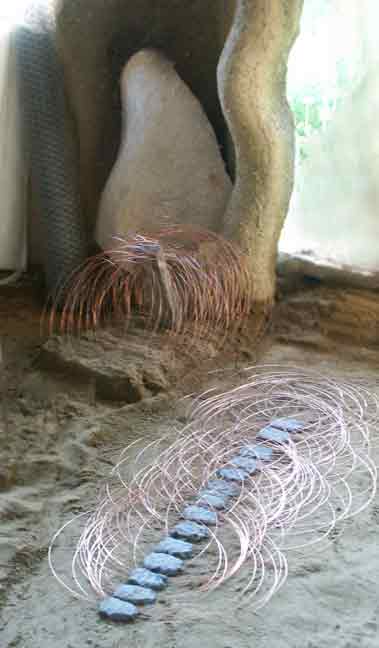
The next picture shows the bonding method between upper and lowed panels. A mud dam is made between two lower panels. A portion of lime is used to reduce slump in the dam. After the mud dam gels, flat spiral/coil rings are "plastered" on to dam. The "rings" reach down to over-lap the lower panels. The inner tube form is shoved under the rings to continue panel work, (as explained above). Acrylic or latex admix were used on exposed surfaces and sometimes methocel. ( These reduced sag or that runny quality which is most usually sought after in the concrete industry).
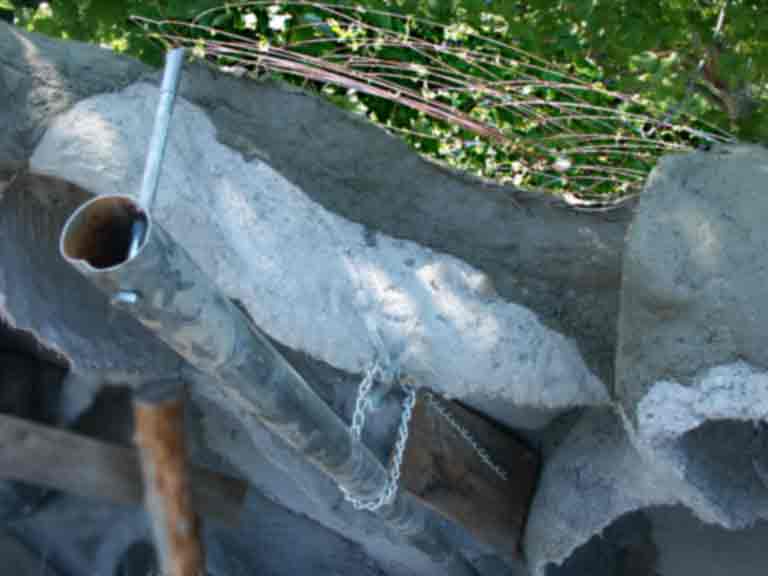
More pictures of wet mud reinforcing are shown below. The next picture also shows a birb bath attached to dome, many more may be added later. Also note the stretched rings which span between current wet panel and the lower panel at botttom of picture. Wire rings link individual coffer-panels.

Pictures taken at same time from differing viewpoints. Background blurring used with central photo-sharpening for emphasis and download speeding.
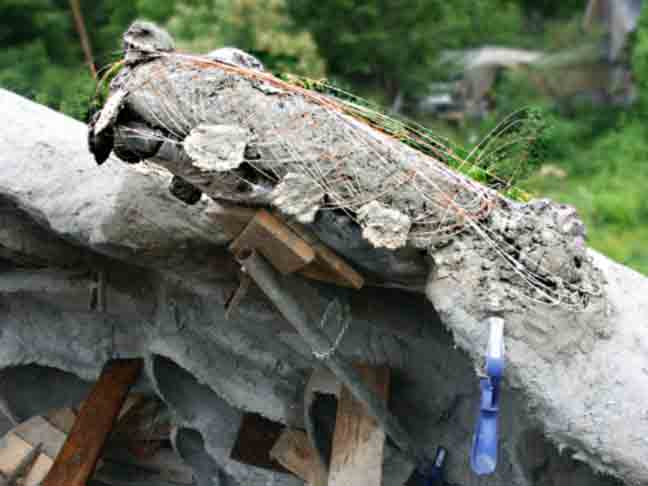
Picture below shows how big and small balls fill gaps. The dome shaping is being somewhat randomized and not made symmetrical. My computer aided camera system ("Cadmera"- a firewire-camera-lucida) has not been used for lack of system-development- time. This project has many difficult demands and some have simply been ignored. The dome will be hurried along with many internal features unfinished, so that I can get back to other great projects like camera-lucida in a hand held device).
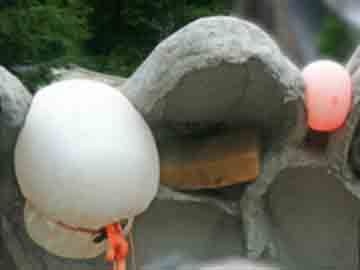
NextPicture Below: Coffers (leaf panels) are finished and bird sculpture collection is started.

Below: Pictures: Inside View Of Coffers.
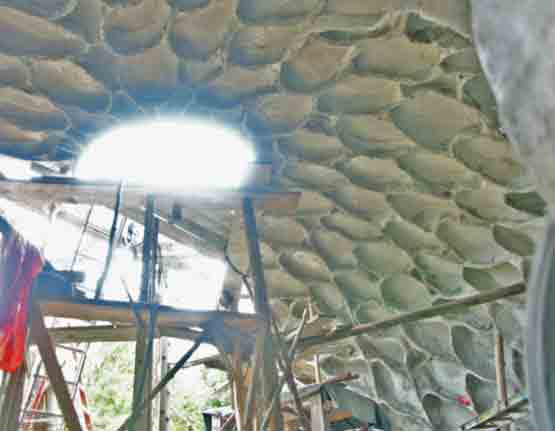
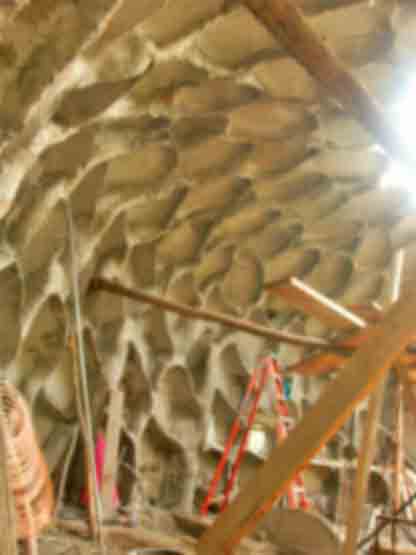
Picture Below:Installation of the last mini-sized coffer-forms include foam-rubber-scap, large ball and a tied-up inner-tube.
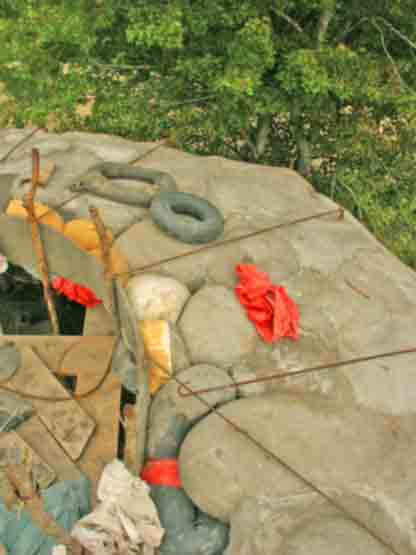
Above: Occulus reinforcment bars are hung from temporary rebars.

Innertube forms floated overhead, forming cantilevering coffers, Q.E.D!
Sad Note: Fly-ash-micro-silicas are unfortunately not used in this project for a number of reasons: Lack of equally strong sands or pea stone obtained locally, lack of locally produced fly ash, shipping difficulties, lack of safe-handling equipment, storage difficulties, lack of perfectly fresh Portland cement*, timing constraints, unwanted added-additives and the consequential poor ecological tradeoff. Better concrete/mortar would be expensive and could require more global-warming due to long distance hauling of all material. Yet there is certainly appeal to using highly selective ingredients and controled fabrication facilities and systems. (If one had actual financing all around. My financing was strictly from personal labor, (service sector), earnings).
*Another very sad note: It is almost impossible to obtain untainted bagged-Portland-cement-paste because cement manufacturers insist on punching countless holes in the cement bags. These hole absolutely defy good reasoning or material science. These delinquent cement bags suck in humidity from the atmosphere at an alarming rate. Very poor excuses are given for ruining the cement bags with these intentional holes. When the user transfers cement into air-tight containers, the cement can last for years. If left in the manufacture's bags, the cement becomes lumpy in a short time. Difficulty With & A Partial Solution For Lumps In Bagged Cement.
(A weather proof colorful coating of some kind is planned for this structure, after completion, perhaps latex-cement slurry with mixed green pigment. Later, edge shading and leaf detail may be added or acid stained, perhaps in 09).
The content on this website, http://harmoniouspalette.com, is placed in the public domain only as a free exchange of ideas and as a "hard studied wish to serve life". The author assumes no responsibility for the improper use of the concepts in these web pages, as all relevant laws of life and local codes should be verified and observed before any building or experimentation proceeds. discussion is welcome, please write. Bo Atkinson